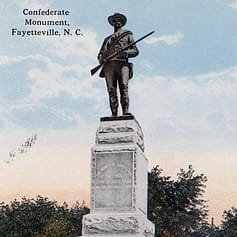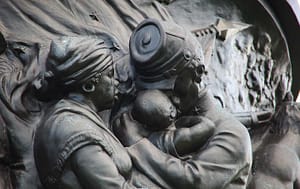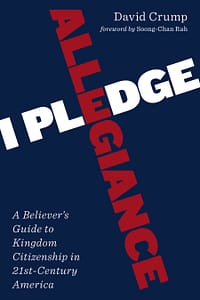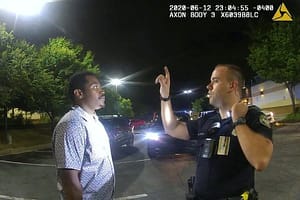Cascade books (the publisher that will eventually release my forthcoming book on Israel-Palestine) recently released a significant book entitled The Spiritual Danger of Donald Trump.
The book is a timely collection of 30 essays by prominent, and not so prominent, evangelical Christians in the hope of convincing evangelical voters NOT to vote for Trump in November.
evangelical Christians in the hope of convincing evangelical voters NOT to vote for Trump in November.
I hope and pray that the book will be a great success.
If you have family, friends – or even complete strangers our regularly see at the coffee shop – who voted for and continue to support Donald Trump, they are the target audience for this book. Go out and buy a box load and distribute them widely in your local evangelical, fundamentalist churches.
It will be a worthy act of responsible citizenship in a country desperately in need of a genuinely moral majority.
The majority (but not all) of the book’s 30 essays are written by conservative, Republican, evangelical Christians. Some of them admit that they voted for Trump in 2016 and have come to regret that decision.
All of them offer substantial, pointed, evidence-based denunciations of Trump’s egregious moral and political failures over the past 3 1/2 years. Several essays document Trump’s habitual misogyny, his pathological lying, his malignant narcissism, his public, petty demeaning of those who disagree with him, his race-baiting and endorsement of white supremacy, the abuse of immigrants and asylum seekers at our southern border, the financial profiteering from his presidency, his consistent abuse of executive power, and his utter disregard for the constitution.
I was happy to see that a few of these Republican authors even condemned the Republican controlled Senate for acquitting Trump at the end of his impeachment trial.
The best essays, for my money, are Randall Balmer’s chapter on the long (and nearly extinct) history of evangelical social activism.
He offers an important history lesson for the entire evangelical church, reminding us of evangelicalism’s past commitments to pacifist, anti-war activism, anti-capitalist economics, anti-big business, anti-slavery, prison reform, public education, universal health care, women’s rights, and much more.
I found Balmer’s dissection of the Religious Right’s origins to be especially interesting. He argues that the modern juggernaut of religious, conservative, political power was not sparked by the anti-abortion sentiments that we see today — as so many imagine. In fact, the Religious Right began as a white, pro-segregationist movement fighting against the desegregation laws emerging from the civil rights movement, especially in the south.
It was no accident that both Bob Jones and Jerry Falwell were running segregated, all white educational institutions at the time. The seeds of the Religious Right sprouted and grew in the soil of racism, the degradation of life, not “pro-life” activism.
Against this backdrop, it’s not very surprising to see how many of today’s evangelical leaders continue to condemn the Black Lives Matter and anti-police brutality movement.
Steven Hayns’ chapter about Dietrich Bonhoeffer and contemporary evangelicalism’s distortion of Bonhoeffer’s social, political theology – especially at the hands of moral miscreants like Eric Metaxis, the deluded, self-proclaimed Bonhoeffer “expert” – is particularly helpful for anyone who wants to think more deeply about Christian political engagement.
 (Ahem…my book, I Pledge Allegiance, would also be a great follow-up read for those who are interested in thinking more deeply.)
(Ahem…my book, I Pledge Allegiance, would also be a great follow-up read for those who are interested in thinking more deeply.)
John Fea provides a refreshing chapter entitled “What White Evangelicals Can Learn About Politics from the Civil Rights Movement.” It is the only chapter I read twice.
If you are looking for a good resource explaining the spiritual dangers of the Trump presidency, written by conservative Christians for other conservative Christians, then look no further. This is the book to give to family and friends (even if they are not Christians) at the 4th of July family barbecue, summer outings, fall dinner parties, and everything else in between.
Now for a brief critique.
For a reader like me, the book’s strength is also its weakness; and it’s a serious weakness.
Written by conservatives for other conservatives, the majority of its criticisms against Trump predictably conform to the standard conservative, evangelical view of the world.
Only a few of the contributors (thankfully there are a few) indicate that Trump’s moral failures have led them to re-frame, or re-imagine, what their expectations of a Christian moral politics/politician might look like beyond the old, evangelical culture wars.
For most of the book’s contributors, America’s #1 moral failing is abortion. Full stop.
A handful of essays thankfully include racism, poverty, and income inequality to this list of corporate sins, but they are a small minority.
No one calls out the corporate, structural oppression created by American imperialism, the military-industrial complex, our global war mongering, the economic sanctions that kill tens of thousands of people in other nations, or America’s continuing sponsorship of military coups…and that is only the short list of issues ignored here.
The majority of the book’s criticisms focus on Trump’s personal demeanor, individual immorality, and its personal consequences.
I very much agree that all of these are serious issues.
Yet, it is also symptomatic of evangelicalism’s obsessive individualism, something that offers them very few tools for knowing how to construct a more just and equitable politics for the whole of our society and our global partners.
Trump’s principle problem, it seems, is that he has stretched the elastic, moral boundary of evangelicalism’s ethical code beyond its very flexible breaking point.
For too many contributors (but again, not all), Trump himself is the problem — as opposed to being a symptom of deeper political problems in our country. Once he is replaced by a morally acceptable Republican candidate (no Democratic could ever fit the bill, of course) the nation’s troubles will be solved – provided he (or she?) continues to fill the Supreme Court with conservative, anti-abortion justices.
For instance, whenever a contributor offers examples of good vs. bad candidates, the opponents are always Republican vs. Democrat. Apparently, with the exception of Donald Trump, Republican candidates who fight abortion are always good by definition, whatever their other policy positions may be.
Bill Clinton was a bad president because he was an adulterer, not because his draconian crime bills stoked the prison industrial complex, helping to put 1 of 4 African American men in prison, most of them for no good reason.
George H. W. Bush was a great president, despite the fact that he supervised numerous atrocities while head of the CIA, as well as several dirty wars in South and Central America that slaughtered thousands of innocent people.
But at least Bush didn’t swear in public.
Many of the contributors rightly condemn Trump’s womanizing, his multiple marriages, and his extra-marital affairs.
Yet, none of these folks would condemn their iconic Ronald Reagan, a prolific Hollywood fornicator and twice married star whose second wife regularly consulted a spiritualist medium in the White House. Never mind that Reagan’s administration was subject to more ethics violations inquiries (up to that point) than any previous presidency.
At least Reagan didn’t swear in public.
I know, I know. None of this is the point of the book.
Yet, the fact remains, only a select few of the contributors have a broad enough Christian vision to poke their heads up beyond the pious horizons of American, evangelical culture.
And that makes this book a disappointment to me.
Like this:
Like Loading...

 museums where children will learn about this country’s despicable history of slavery.
museums where children will learn about this country’s despicable history of slavery. These monuments were erected as reactionary displays against Lincoln’s vision for southern Reconstruction.
These monuments were erected as reactionary displays against Lincoln’s vision for southern Reconstruction.
 being
being  among evangelical Christians.
among evangelical Christians. evangelical Christians in the hope of convincing evangelical voters NOT to vote for Trump in November.
evangelical Christians in the hope of convincing evangelical voters NOT to vote for Trump in November. (Ahem…my book, I Pledge Allegiance, would also be a great follow-up read for those who are interested in thinking more deeply.)
(Ahem…my book, I Pledge Allegiance, would also be a great follow-up read for those who are interested in thinking more deeply.)
 As protests sweep the world in the wake of the Minneapolis police killing of George Floyd, Israel lobby groups are struggling to appear on board with the Black Lives Matter movement while upholding their support for Israel’s racism.
As protests sweep the world in the wake of the Minneapolis police killing of George Floyd, Israel lobby groups are struggling to appear on board with the Black Lives Matter movement while upholding their support for Israel’s racism.